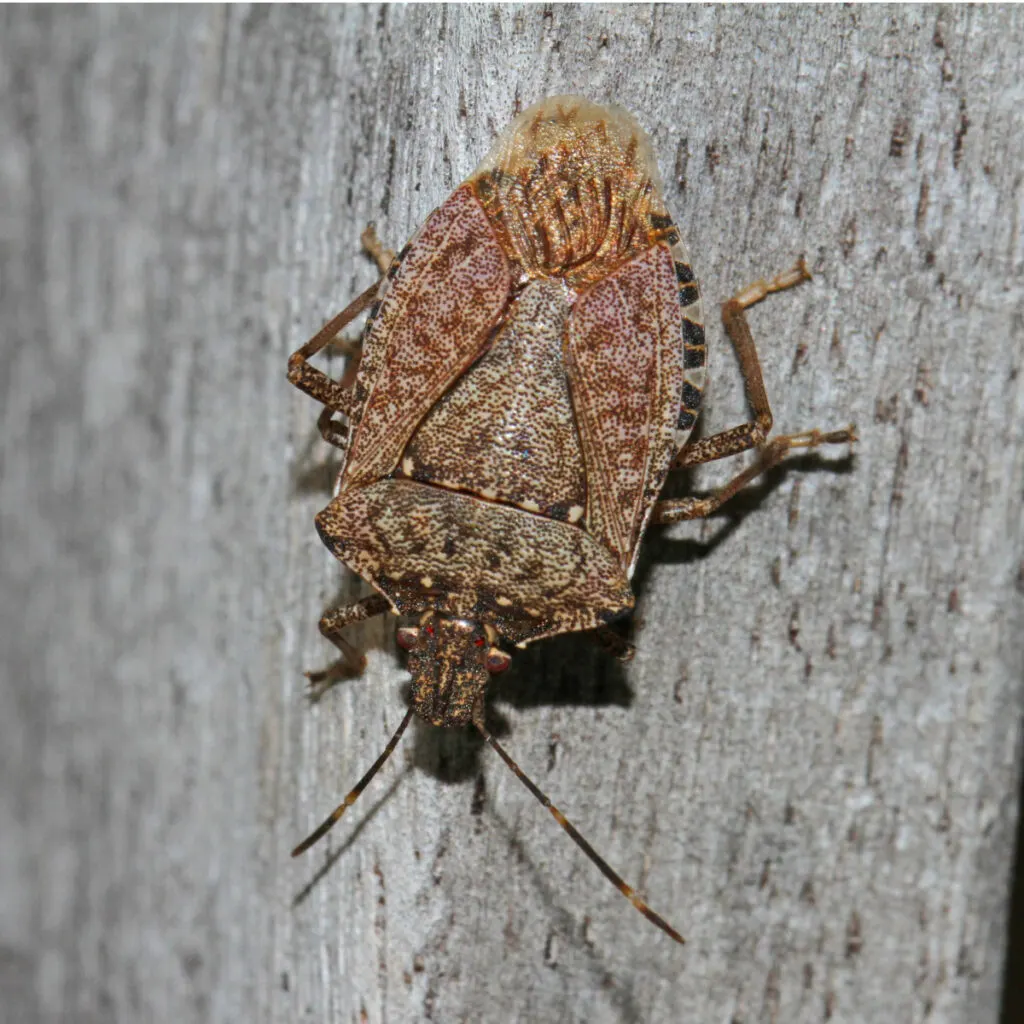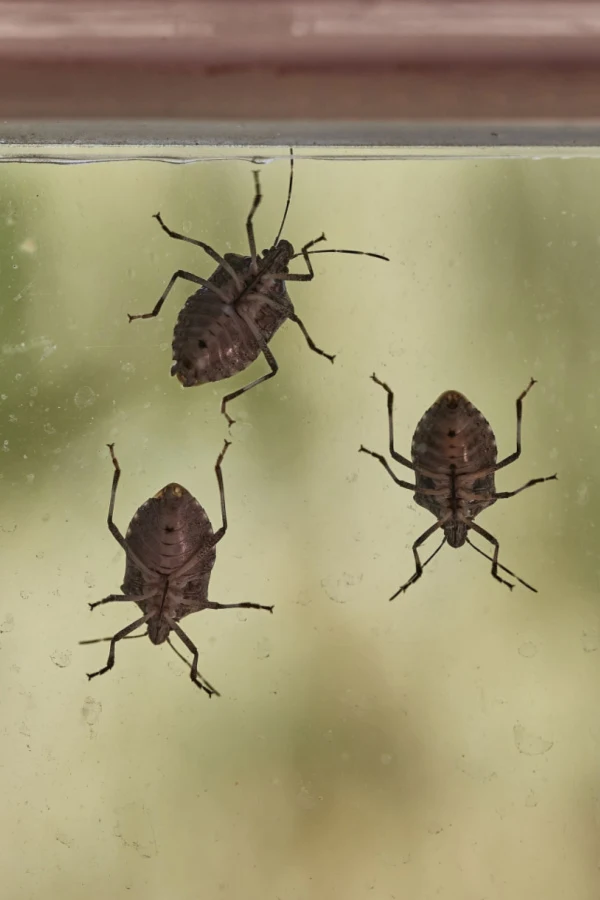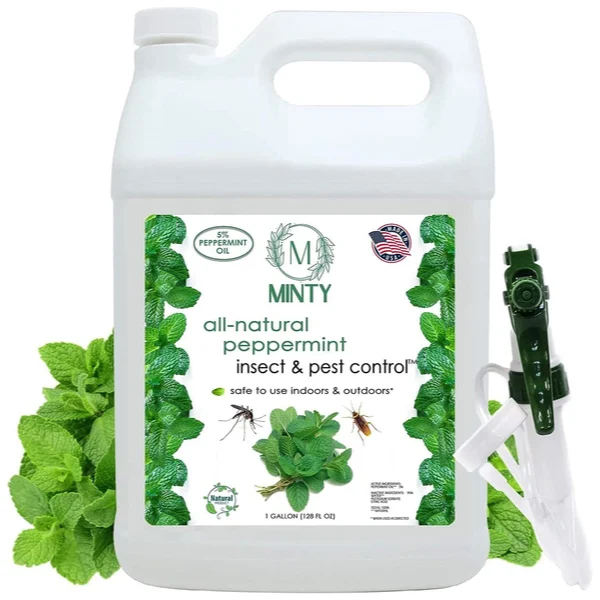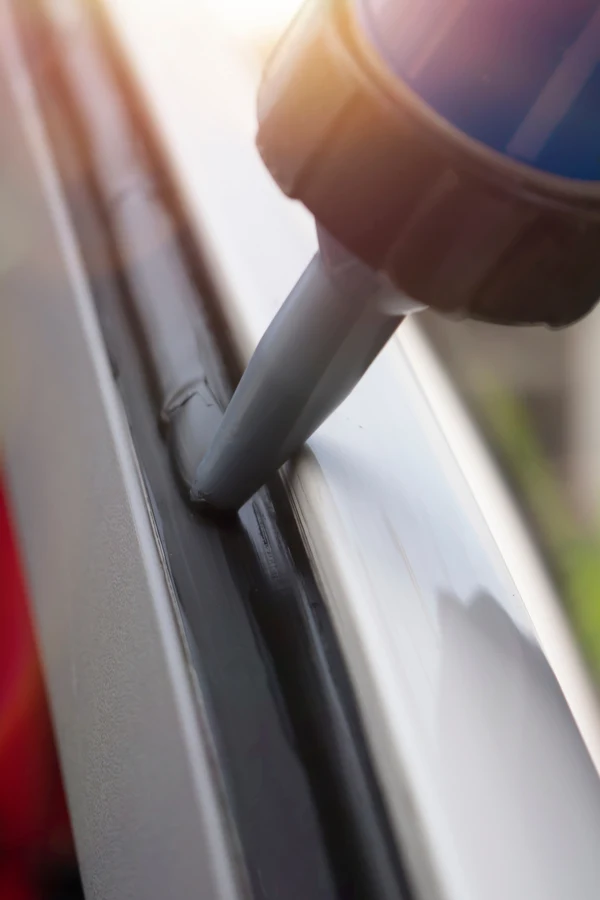Looking for a few effective ways to stop stink bugs from getting inside your house this fall? One thing is for sure – if you are tired of having stink bugs “come out of the woodwork” inside your home in the winter and early spring – fall is the time to take action!
As autumn arrives and the first of the cooler weather begins to settle in, stink bugs seemingly appear out of nowhere. And when they do, they quickly begin their annual onslaught to get inside of homes, apartments and anywhere else they can find a bit of protection from the upcoming winter.
Stink bugs have become a major household pest in a short amount of time. The pest was first introduced into the United States in the latter part of the 1990s. Thought to have hitched a ride across the ocean in shipping containers that arrived on the east coast, they quickly established a foothold. And – have been nothing but trouble ever since!

With no natural predators and a high tolerance to sprays and insecticides, stink bugs continue to multiply and spread across new regions with each passing year. Although they do not bite, sting or otherwise harm wood, drywall and other building materials, they can be a major nuisance to those who have to constantly deal with them indoors.
Dealing With Stink Bugs – How To Stop Stink Bugs
The single reason stink bugs come into a living space is survival. They are simply looking for a place to stay warm and ride out the winter. Because of this, as soon as the cool air of fall arrives, so does the home invasion of stink bugs.
Once they are able to get inside, they quickly seek shelter in corners, loose trim, attics – and wherever they can hide and hibernate. Quite often, in the fall, other than seeing a few buzzing about – you may not think you have many stink bugs inside at all. This is because they search out those hiding spots so quickly.
But once winter settles in, the warmth indoors brings them back out. And it can be unsettling for sure. You can find them crawling on couches, inside of paper towel rolls, in your bed – and you get the idea – they are everywhere!

The “Stink” Of The Stink Bug – How To Stop Stink Bugs
This problem of appearing indoors continues all winter and spring long. And when spring does arrive – they come out by the hundreds if not thousands. So much so that you wonder how so many could hide indoors without you knowing!
At this point, they are searching for a way to get back out. But as they do, they can drive people crazy with their constant buzzing, flying and crawling around indoors. And, of course, that all-too familiar smell.
If their crawling and buzzing wasn’t bad enough, stink bugs release a foul odor whenever they feel a threat. And that distinct odor seems to linger for hours. And if you happen to use a sweeper to try to vacuum them up, it can linger in the sweeper for days and weeks!
So what is the answer to stopping all of this madness? The good news is that with a bit of work in the fall you can indeed stop or at least dramatically reduce the amount of stink bugs that make it indoors. And with that in mind – here is a look at the best ways to do just that.
How To Stop Stink Bugs From Getting Indoors!
The absolute best method for keeping stink bugs out is prevention. And it requires a two prong approach to be completely effective. Even more, it must be done in the fall when they are actively searching for cover.

The first prong of the defense is to use some type of repelling barrier spray on your dwelling. As it turns out, there are a few scents and sprays that stink bugs do not like. And when sprayed around the exterior of your home, they can be fairly effective at stopping the pests from clinging to surfaces and finding entry points.
The second and absolute key to total control is to seal off all entry points. And believe it or not, there can be quite a few places that stink bugs can get in. Let’s start by covering protective sprays – and then cover how to seal off the main entry points.
Using Barrier Sprays – How To Stop Stink Bugs In The Fall
Although there have not been a lot of successful insecticides against stink bugs, preventative sprays do seem to have a very good success rate. Although barrier sprays do not kill stink bugs (it’s hard to find something that really does!) – they will keep them from wanting to scour your exterior for entry points.
By using these sprays to cover foundations, eaves, doors, windows and all entry points, you can greatly reduce a stink bug invasion.
Two of the scents stink bugs do not like most are mint and garlic. And by mixing these oils from these two natural products with water and creating a spray, it can safely be used to create a barrier around your house.

The key to effectiveness with both is to start spraying early in the fall and often. In fact, the residue can come off after hard rains or heavy dew – so reapplying is necessary. But by spraying entry point areas, you can greatly reduce the amount of stink bugs trying to find their way in.
Using Natural Repellent Sprays
It is quite easy to make your own natural sprays from essential oil and water. In addition, there are also quite a few ready-to-go sprays available as well. These also have the added effect of repelling some of fall’s other big pests like spiders from coming indoors too!
- Garlic Barrier 2002 AG+ Liquid Spray, 1 Gallon – Product Affiliate Link
- Minty Insect & Pest Control, Powerful & Natural 5% Peppermint Oil Spray – Product Affiliate Link
Beyond spraying natural repellents, the next key is to seal up all entry points. And for that, a walk around your house is a must to identify and then eliminate easy access areas. In addition, fall is the time to make sure you are not leaving garage doors and entry doors wide open for any prolonged length of time.
Sealing Off Entry Points – How To Stop Stink Bugs In The Fall
Doors & Windows
Sealing doors and windows with fresh caulking not only helps with winter bills, but in stopping stink bugs too. In fact, window and door cracks are one of the top entry points for them as temperatures cool. Stink bugs easily pass through small cracks around windows and doors.

To prevent entry, seal both inside and outside around these areas. For best results, use a latex caulk that can expand and contract to keep the cracks sealed. When sealing, be sure to check that all trim work is solid, sealed and secure as well. If given the opportunity, stink bugs will crawl into the voids behind trim for winter warmth.
Screens On Windows & Doors – How To Stop Stink Bugs
Damaged and torn screens are another huge entry point for stink bugs. They can easily pass through tiny tears in screens and quickly find a way indoors. Replace worn out screens, or keep the glass down as an alternative. An open window can easily let in hundreds of stinkbugs in a single week.
Door Thresholds & Seals – How To Stop Stink Bugs
Another easy entry access point for stink bugs are door seals and thresholds. The soft rubber is easy for them to slip under and through, especially if it is worn or cracked. Once again, this task not only helps with eliminating stink bugs and other insects, but it’s also a big help in keeping energy bills down.
The thresholds at the bottom of your doorways are another key area to inspect and close off. The bottom plate can easily become loose from constant foot traffic. Seal off the thresholds tightly with a bead of silicone, making sure there are no open gaps the stink bugs can slip through.

And speaking of the bottom of doors, don’t forget your garage door seals. If the seals on the bottom of the door are worn or torn off, replace them. Garages are an easy place for stink bugs to hang out from the extreme cold and stay alive. All they need is that door to open to make it inside!
Seal Off Utility Holes & Lines – How To Stop Stink Bugs In The Fall
You would be surprised at just how many small holes and cracks exist around your home. And they all make it easy for bugs to come inside. Those include holes drilled for air conditioning lines, electric lines and even cable, internet and telephone.
Spend a few minutes and walk around your home looking for any areas where lines come into your home. Take time to seal all of these easy entry points with a high quality silicone caulk of foam spray.
Be sure to take time to look at any and all vents as well. Dryer and air vents are easy spaces for stink bugs to find and enter the home. Check to make sure screens are in place and are free of tears and holes. And if you don’t have a screen in them – put one in as soon as possible.
Here is to stopping stinking bugs from getting indoors this year! For more on natural pest control, check out our pest control section on the website : Pest Control
Follow Our Facebook Page For Great Gardening Tips And Advice! This Is My Garden Facebook Page
This Is My Garden is a garden website created by gardeners, for gardeners. Jim and Mary Competti have been writing gardening, DIY and recipe articles and books and speaking for over 15 years from their 46 acre Ohio farm. They publish three articles every week, 52 weeks a year. Sign up today to follow via email, or follow along!
